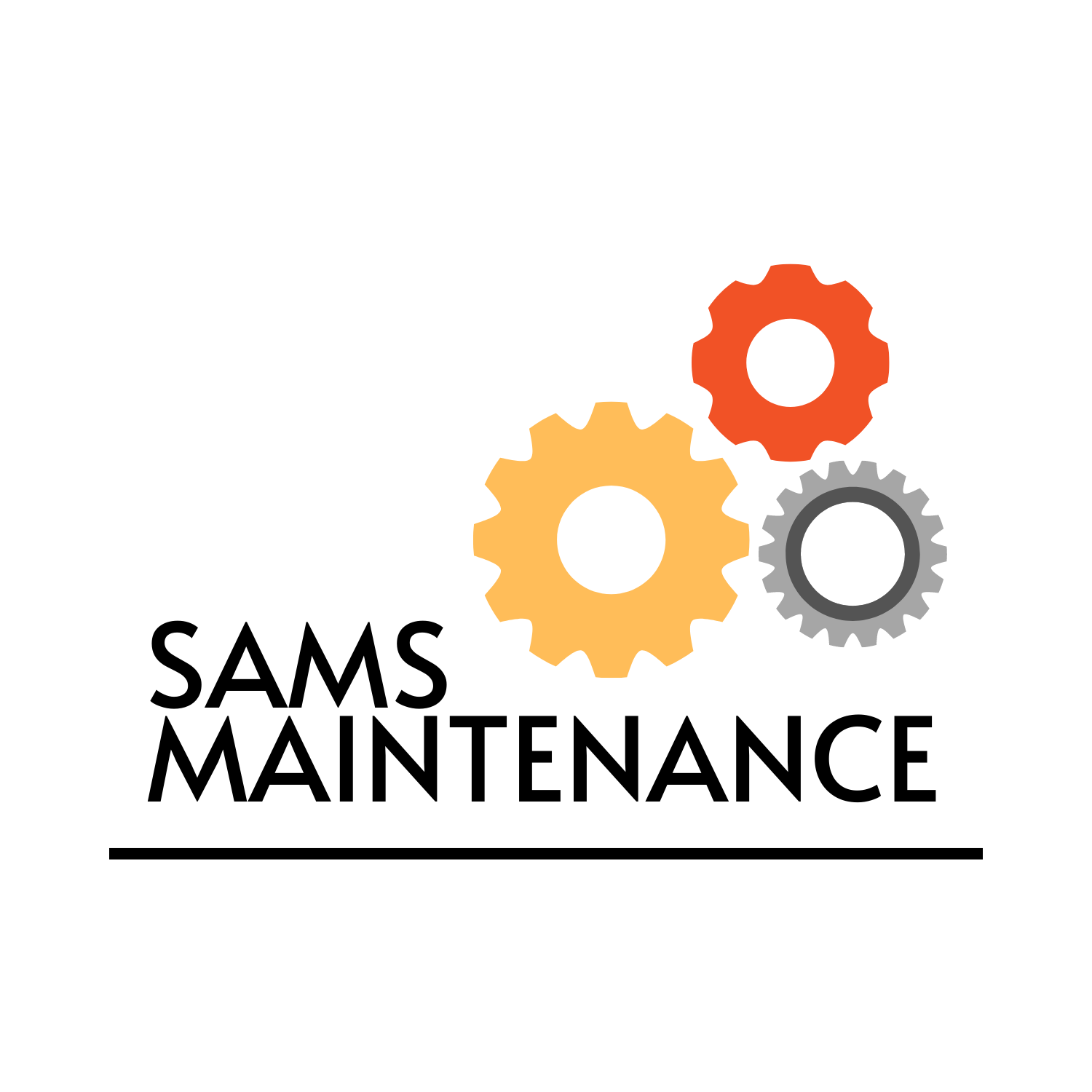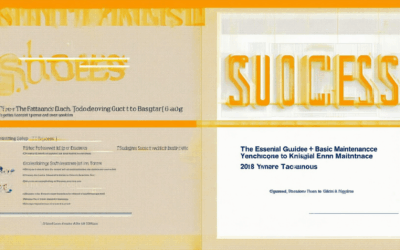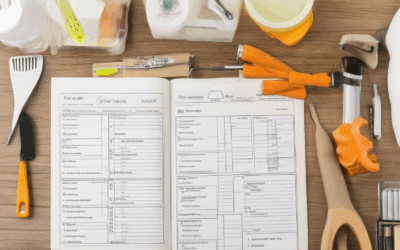Ensuring your home remains in top shape requires consistent and effective maintenance, especially for homeowners who may not always prioritize routine tasks. While many homeowners overlook the importance of regular upkeep, understanding the basics of easy maintenance can prevent costly repairs and extend the lifespan of your property. Whether you’re new to homeownership or looking to refine your current routine, this guide offers practical advice and actionable tips to help you master the art of easy maintenance for your home. From identifying essential tasks to exploring budget-friendly strategies, we’ll cover everything you need to know to keep your living space in excellent condition. By following the insights outlined in this comprehensive resource, you’ll not only save time but also ensure your home stays protected and well-maintained for years to come.
Key Takeaways
- Adopt the 1% Rule for home maintenance budgeting to estimate funds needed annually.
- Prioritize regular inspections and planned replacements to address issues early.
- Build an emergency fund for unexpected repairs to avoid financial strain.
- Consult licensed professionals for complex tasks to ensure safety and quality.
- Apply the Maintenance Golden Rule (6:1 Ratio) to balance preventive and corrective efforts.
- Balance preventive and corrective maintenance with a 6:1 ratio to optimize efficiency.
- Set aside 1-4% of your home’s value for annual maintenance to stay prepared.
- Create a reserve fund equivalent to 3-6 months of household expenses for emergencies.
- Tailor your budget to account for your home’s age and local conditions.
- Monitor and adjust your maintenance budget regularly to meet evolving needs.

Home Maintenance Checklist: A Comprehensive Guide
Keeping your home in tip-top shape requires consistent effort and attention. Below is a detailed guide outlining essential maintenance tasks to ensure your living space remains safe, functional, and comfortable.
1. Exterior Maintenance
- Roof and Chimney: Inspect the roof for missing shingles or damage annually. Check chimneys for cracks or blockages and clean them as needed.
- Gutters: Clean out gutters twice a year (spring and fall) to prevent clogs and ensure proper drainage.
- Siding and Windows: Look for peeling paint, warped wood, or loose siding. Replace caulkings around windows and doors as needed.
2. HVAC System
- Filters: Change or clean air filters monthly to maintain efficiency and indoor air quality.
- Ductwork: Have ductwork inspected by a professional twice a year to check for leaks or blockages.
- Thermostats: Adjust or program thermostats seasonally to optimize energy use.
3. Plumbing System
- Water Pressure: Test water pressure monthly using a pressure gauge attached to a faucet. Reduce pressure if it exceeds recommended levels.
- Leak Detection: Check pipes and fittings for signs of wear or corrosion. Address leaks promptly to prevent further damage.
- Drains: Use a drain cleaner quarterly to prevent clogs in showers, sinks, and toilets.
4. Appliances
- Refrigerator: Clean coils monthly to ensure efficient operation.
- Stove and Oven: Check burners for obstructions and clean the oven quarterly.
- Exhaust Fans: Clean vent hoods and ducts to prevent odors and blockages.
5. Electrical Systems
- Breakers and Outlets: Inspect circuit breakers for tripping causes and test GFCIs monthly. Check outlets for warmth and functionality.
- Wiring and Switches: Ensure all electrical components are secure and free from damage or wear.
6. Heating and Cooling
- Furnace and Air Conditioner: Schedule annual inspections to ensure proper functioning and safety.
- Baseboard Heaters: Clean and inspect units regularly to prevent overheating or malfunction.
7. Fire Safety
- Smoke Detectors: Test smoke detectors monthly and replace batteries as needed.
- Carbon Monoxide Detectors: Check and replace detector batteries annually, especially if you have gas appliances.
8. Landscaping
- Yard Care: Trim trees and bushes several times a year and fertilize as recommended by local experts.
- Weeds and Pests: Control weeds and pests regularly to maintain lawn health.
9. Foundation and Structural Integrity
- Foundation Inspection: Examine the foundation for cracks or unevenness annually. Address any issues promptly.
- Concrete and Walkways: Check for crumbling concrete and repair as needed. Inspect walkways for stability.
10. Interior Maintenance
- Walls and Floors: Look for scuffs or damage. Repair walls and inspect floors for soft spots or uneven tiles.
- Ceilings: Check for water stains or peeling paint and address any structural issues.
11. Seasonal Tasks
- Spring Cleaning: Tidy up clutter and perform deep cleans before the busy season begins.
- Fall Preparation: Insulate windows, stockpile firewood, and prepare for colder weather.
- Winter Preparation: Clear snow from walks and ensure pipes are insulated to prevent freezing.
Creating a Maintenance Schedule
Organize tasks into a checklist and assign schedules based on frequency. Prioritize major tasks like HVAC and plumbing inspections, which are critical for home safety. Consider hiring professionals for complex jobs to ensure accuracy and safety.
By staying proactive with home maintenance, you can prevent minor issues from escalating and enjoy a comfortable, safe living environment year-round.
What are the 3 P’s of Maintenance?
The 3 Ps of maintenance are Prevention, Prediction, and Proactivity. Each plays a crucial role in ensuring optimal performance and longevity of systems, equipment, and assets. Here’s a closer look at each:
1. Prevention
Prevention focuses on taking measures to stop issues before they occur. Regular inspections, routine servicing, and implementing preventive measures are key components. By addressing potential problems early, organizations can avoid costly repairs and extend the lifecycle of their assets. For instance, replacing worn-out parts or conducting energy audits can significantly reduce breakdowns and improve efficiency.
2. Prediction
Prediction involves identifying potential failures or maintenance needs through analytics and monitoring. Using data from sensors, logs, and historical records, professionals can forecast when maintenance is needed. Predictive maintenance strategies help in planning repairs during downtime, minimizing disruption and ensuring smooth operations. This approach is particularly effective for complex systems where unexpected failures can lead to significant disruptions.
3. Proactivity
Proactivity is about taking initiative to address maintenance tasks before they become urgent. This involves staying ahead of scheduled maintenance, responding promptly to alerts, and resolving issues as soon as they arise. A proactive approach ensures that systems remain operational and efficient, reducing the risk of unexpected failures. It also fosters a culture of reliability and preparedness within the organization.
Why These Ps Are Essential
Combining Prevention, Prediction, and Proactivity creates a robust maintenance strategy that covers all bases. It ensures that systems are well-maintained, operates efficiently, and adapts to changing conditions. By integrating these approaches, organizations can achieve long-term cost savings, improved productivity, and higher levels of customer satisfaction.
Learn more about effective maintenance practices .

What is the Lowest Maintenance Material for a House?
When considering the lowest maintenance materials for a house, several options stand out for their durability and minimal upkeep:
- Brick and Stone: These materials are renowned for their longevity, often lasting well over 100 years with just routine maintenance. While they may be costly upfront, they offer exceptional durability and require little more than annual inspections and occasional repointing.
- Vinyl Siding: Known for its low maintenance and resistance to rot, vinyl siding is an excellent choice for homeowners seeking a durable exterior finish. It requires periodic cleaning and caulking but generally needs less attention compared to traditional siding.
- Stucco: Stucco is a versatile and low-maintenance material that resists cracking and insect infestations. However, it does require proper application to ensure longevity and may need touch-ups over time.
- Metal Roofing Systems: These systems are highly durable and resistant to pests, though they may require occasional treatment to prevent rusting and ensure long-term performance.
- Composite Materials: Products like fiber cement siding combine the strength of wood with the durability of concrete, offering a low-maintenance option that resists warping and rotting.
When choosing the best material for your home, consider factors such as budget, installation complexity, and local climate conditions. For further details on each material, explore our exterior materials guide .

The 1 Rule for Home Maintenance
When it comes to home maintenance, one essential rule to follow is the 1% rule . This rule helps you estimate how much money you should set aside annually for home maintenance. Here’s how it works:
- Assess the current value of your home.
- Calculate 1% of that value. For example, if your home is valued at $250,000, 1% amounts to $2,500 per year.
- Set aside this amount specifically for home maintenance expenses.
This rule is particularly useful because homes require ongoing care, and having a dedicated fund helps cover unexpected repairs and replacements without dipping into other budget categories. However, it’s important to also:
- Inspect regularly : Check for signs of wear, leaks, or pests at least twice a year to catch issues early.
- Plan for replacements : Replace major systems like roofing, HVAC, and plumbing when needed, even if they’re still functioning well, to prevent sudden breakdowns.
- Keep an emergency fund : In addition to your 1% rule, save some money for unexpected emergencies like appliance failures or natural disasters.
- Tackle projects promptly : Address maintenance tasks as they arise to avoid minor issues escalating into major problems.
- Consult professionals : For complex tasks, hire qualified contractors to ensure everything is done safely and correctly.
By combining the 1% rule with these supplementary strategies, you’ll be well-prepared to keep your home in great shape for years to come.
The Maintenance Golden Rule Explained
The maintenance golden rule is a simple yet effective strategy for optimizing property upkeep. It suggests that for every six preventive maintenance (PM) measures performed, one corrective maintenance (CM) measure should be implemented. This balanced approach ensures that issues are addressed before they escalate, saving costs and extending the lifespan of your assets.
Understanding the Ratio
The core of the maintenance golden rule lies in its 6:1 ratio. Here’s how it works:
- Preventive Maintenance (PM):
- Regular checks, inspections, and routine tasks aimed at preventing equipment failure or damage.
- Examples include oil changes, filter replacements, and tune-ups.
- Learn more about effective PM strategies .
- Corrective Maintenance (CM):
- Addressing issues that arise due to wear, damage, or breakdown.
- Repairs, replacements, or upgrades needed to restore functionality.
- Discover best practices for CM .
By maintaining this balance, you ensure that minor issues don’t develop into major problems, reducing downtime and costly repairs.
Why the Ratio Matters
Adhering to the 6:1 rule helps in several ways:
- Cost Efficiency: Preventive measures are generally cheaper than corrective ones.
- Equipment Lifespan: Proper PM extends the useful life of machinery and systems.
- Safety: Proactive maintenance reduces the risk of accidents caused by faulty equipment.
This rule is particularly useful for businesses looking to minimize operational disruptions and extend asset usability.
Start applying the maintenance golden rule today and take the first step toward a more reliable and efficient operation.

How Much Money Should You Set Aside for Home Maintenance?
When planning for home maintenance, it’s essential to allocate a portion of your budget to cover both routine care and unexpected repairs. Here’s a breakdown of recommendations:
- Annual Budget Recommendation:** – A common guideline is to set aside 1% to 4% of your home’s value annually for maintenance. This range accounts for both regular upkeep and unforeseen issues.
Creating a Reserve Fund
- Emergency Fund:** – Experts suggest having a reserve fund equivalent to 3 to 6 months of your household expenses. This buffer helps cover large, unexpected repair costs, such as replacing a water heater or dealing with storm damage.
Breaking Down Annual Costs
- Regular Tasks:** – Budget for annual inspections (e.g., HVAC systems, chimneys, and plumbing) and routine replacements (e.g., air filters, batteries, and roof shingles).
- Unexpected Repairs:** – Include a contingency for emergencies, such as burst pipes or appliance failures.
Consider Your Home’s Condition and Location
- Newer Homes:** – If your home is relatively new and in good condition, you may need less money allocated for maintenance.
- Aging Homes:** – Older properties often require more frequent and costly repairs, so plan accordingly.
- Location Factors:** – Homes in areas prone to severe weather (e.g., high winds, hailstorms) may need a slightly higher maintenance budget.
Tracking and Adjusting Your Budget
- Monitor Spending:** – Keep track of your maintenance expenses to ensure your budget aligns with your needs over time.
- Rainy Day Fund:** – Allocate a portion of your monthly income specifically for unexpected repairs, building your reserve fund gradually.
By following these guidelines, you can ensure your home stays in great shape without being overwhelmed by unexpected costs. Prioritize repairs based on urgency to avoid minor issues escalating into major problems.




0 Comments